Key takeaways
- French photography has evolved through historical contexts, with iconic figures like Marc Riboud blending human emotion and social commentary.
- Storytelling in photography enhances viewer engagement, transforming images into powerful narratives that evoke emotions and cultural reflections.
- Riboud’s techniques, including composition and effective use of light, create immersive experiences, prompting photographers to consider deeper narratives in their work.
- Key themes in Riboud’s work include human connection amid conflict and the tension between tradition and change, emphasizing the significance of capturing ordinary moments.
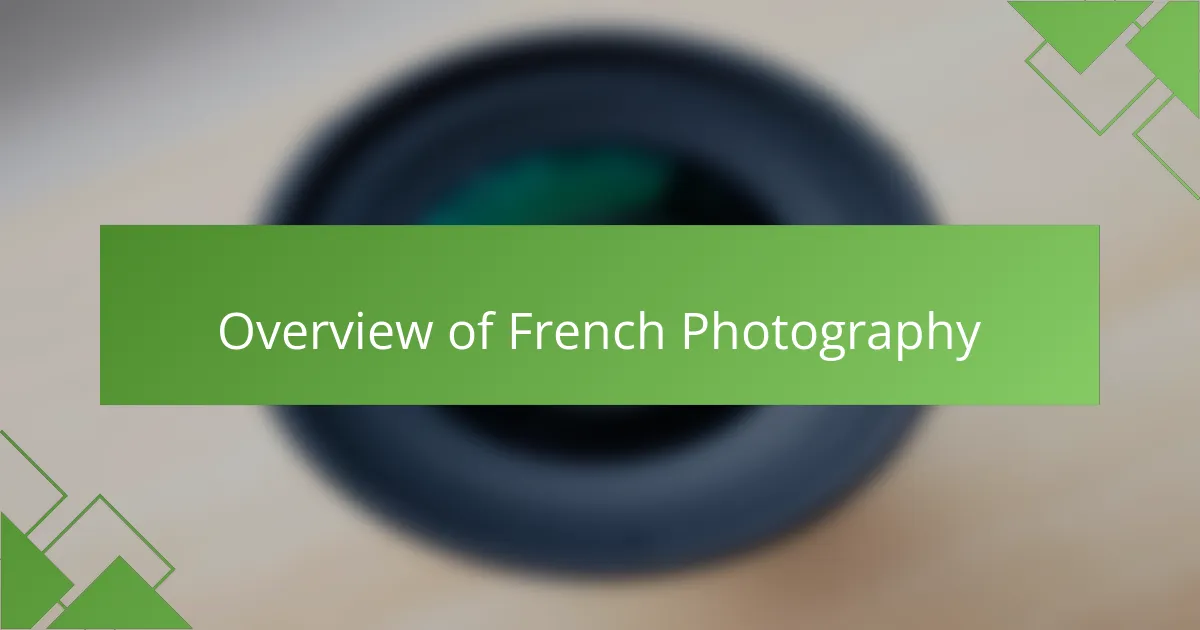
Overview of French Photography
French photography has a rich history that reflects the nation’s diverse cultural landscape. From the pioneering work of early photographers like Nadar, who captured the essence of Parisian life, to contemporary artists pushing boundaries today, each era tells its own story. Isn’t it fascinating how a single photograph can evoke emotions and memories as vividly as a painting?
During my own explorations, I’ve encountered countless images that resonate deeply. What strikes me most is the way French photographers capture the subtleties of human experience—whether it’s the quiet joy of a fleeting moment or the stark reality of social change. It makes me wonder: how does each photographer find their unique voice amidst such a rich tradition?
Moreover, the evolution of photography in France correlates closely with major historical shifts. For instance, the impact of World War II on the art form provoked a raw and honest style that still influences photographers today. This intertwining of history and artistry is what I find utterly captivating about French photography.
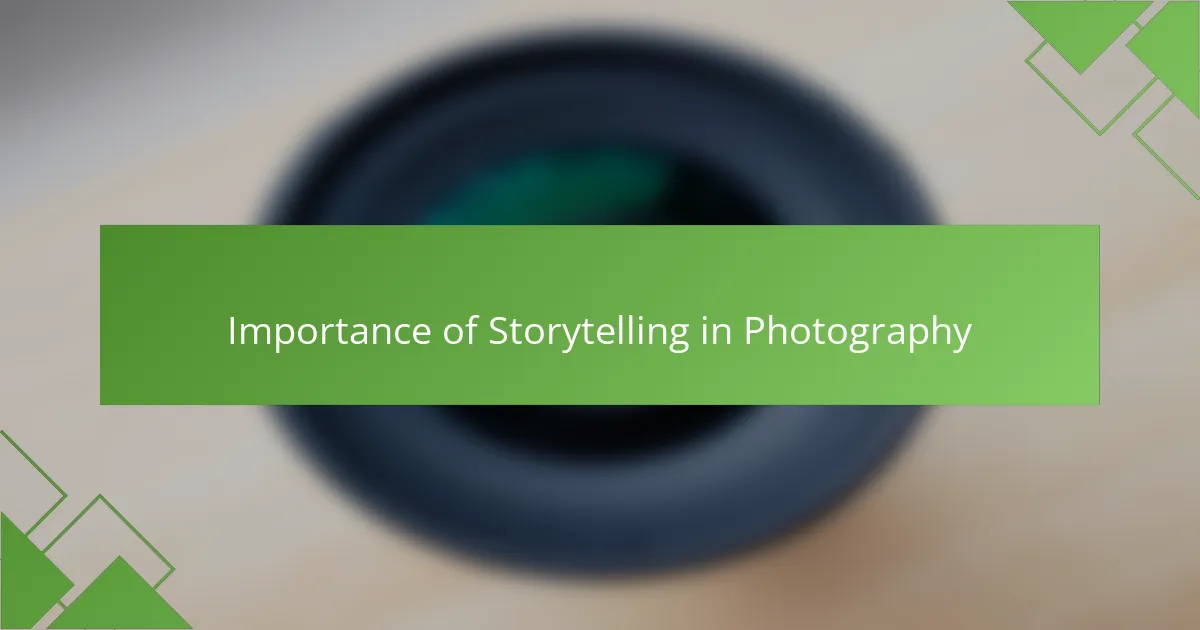
Importance of Storytelling in Photography
Storytelling in photography is crucial because it transforms simple images into powerful narratives. I remember the first time I saw Marc Riboud’s work; his photos didn’t just capture moments; they conveyed feelings and experiences. Each photograph told a story of culture, humanity, and emotion, making the viewer feel deeply connected to the subjects.
Incorporating storytelling into photography creates a deeper connection with the viewer. A single shot can evoke curiosity, joy, or nostalgia, serving as a window into another world. Riboud had a unique ability to encapsulate the essence of a moment, allowing us to witness history unfold through his lens.
- It conveys emotions and connects viewers to the story behind the image.
- Engaging with a photograph stimulates curiosity, prompting questions about the context.
- Well-told stories can preserve memories and cultural legacies for future generations.
- The best photographers, like Riboud, curate scenes that resonate with universal human experiences.
- A strong narrative can elevate a photograph from mere documentation to an art form.
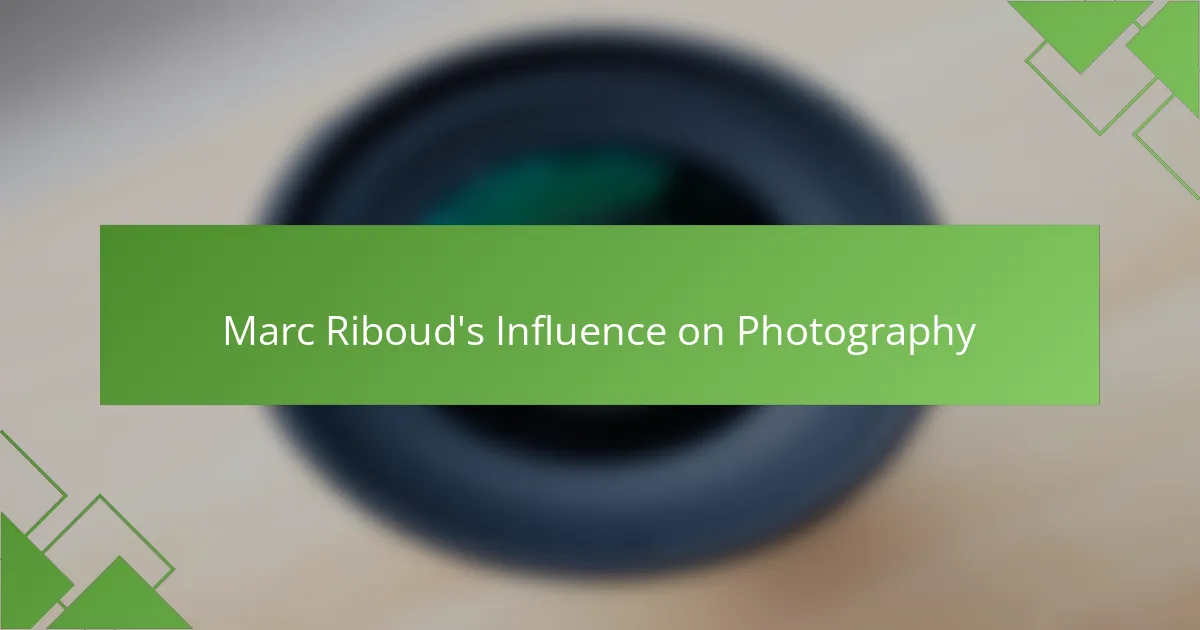
Marc Riboud’s Influence on Photography
Marc Riboud’s impact on photography is profound and enduring. His ability to capture moments that combined human emotion and social commentary resonates deeply with me. I recall the first time I saw his iconic image of a young girl holding a flower in front of soldiers during the Vietnam War. It was a powerful reminder of the hopes for peace in turbulent times and how a simple gesture can speak volumes.
Riboud’s work showcases a unique blend of documentary style and lyrical storytelling, allowing the viewer to connect with the narrative of each photograph. I often find myself drawn to the way he portrayed everyday life, transforming the mundane into something extraordinary, which inspires my own approach to capturing moments.
- Pioneered the integration of photojournalism and artistic expression.
- Moved beyond traditional compositions, inviting viewers into intimate moments.
- Emphasized the human experience, often highlighting the contrast between joy and suffering.
- Influenced generations of photographers to engage with ethical and cultural storytelling.
- His photos serve as historical documents, providing insight into significant social movements.
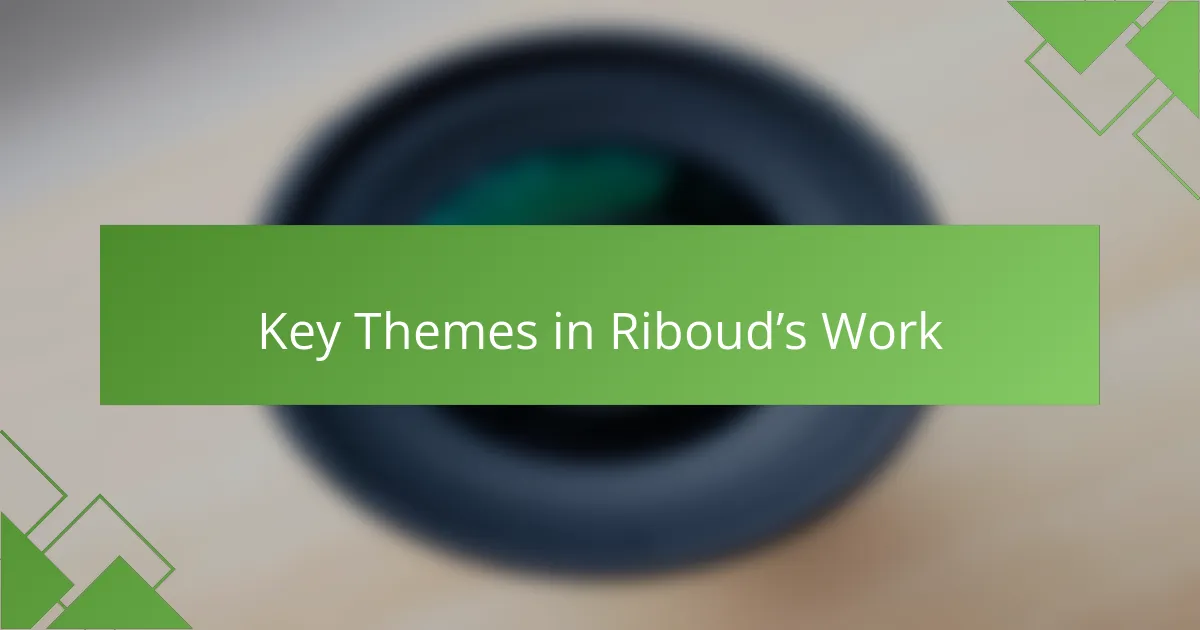
Key Themes in Riboud’s Work
Riboud’s work often revolves around the theme of human connection in times of turmoil. I am particularly moved by how he captured the camaraderie among people in the midst of conflict. For instance, his photos illustrate not just the struggles of daily life but the strength of unity and compassion that can flourish in adversity. It prompts me to ask: how can such shared experiences, reflected in Riboud’s images, foster empathy among viewers today?
Another key theme is the tension between tradition and change. Riboud had a keen eye for observing cultures on the brink of transformation. When I look at his images from Asia, they narrate a rich storytelling of traditions juxtaposed with modern influences. This tension feels so relatable in our current fast-paced world—how often do we see the past and present colliding in our own lives?
Riboud also highlights the beauty found in everyday moments, an aspect that resonates deeply with me. I remember the joy I felt when I discovered an unexpected parallel in my work; capturing simple acts like sharing a meal or children playing can sometimes communicate more than grand historical events. Riboud’s photographs serve as a reminder that profound stories often lie within ordinary interactions, waiting to be noticed.

Techniques Used by Marc Riboud
Marc Riboud’s techniques are nothing short of captivating. He often employed a documentary style that felt spontaneous, allowing the viewer to feel as though they were part of the moment rather than just an observer. I remember the first time I looked at one of his photographs and felt transported into the scene, almost like I could hear the rustle of the people and feel the environment around them. Isn’t it remarkable how a well-timed shot can create such immersion?
One aspect that stands out in Riboud’s work is his use of light and shadow. He knew how to manipulate natural lighting to enhance depth and texture, giving his photographs a rich, emotive quality. I’ve tried to apply similar techniques in my own photography, experimenting with the interplay of light to evoke different moods. Riboud’s ability to tell a story through these visual layers is something that challenges me to improve my craft continually.
He also had a knack for composition, often framing his subjects in a way that drew attention to the larger narrative. For instance, those seemingly simple images of people in everyday scenarios often reveal deeper social commentaries. It’s made me reflect on my own photography—how do I frame my subjects? Am I capturing their essence or merely their likeness? Mark Riboud’s approach encourages me to think critically about the stories I want to convey with my own lens.
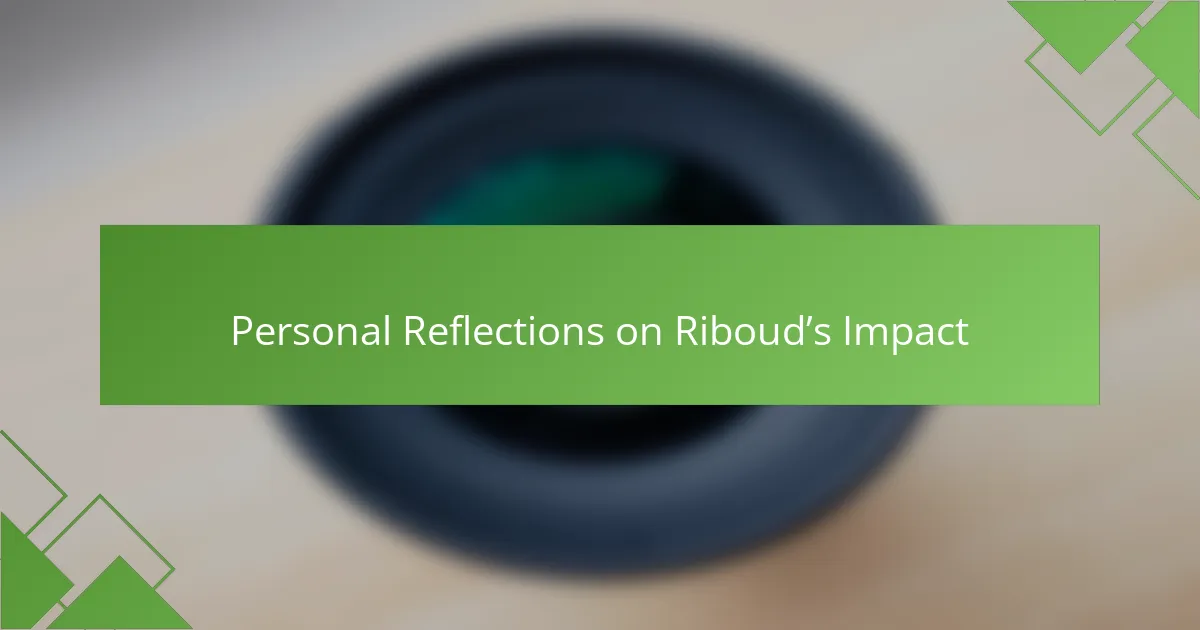
Personal Reflections on Riboud’s Impact
Riboud’s storytelling through photography has always resonated deeply with me. His ability to capture the essence of human experiences, often during pivotal moments in history, strikes a chord that I find both powerful and inspiring. Every image not only tells a story; it invites the viewer into the scene, allowing us to feel a part of that moment in time.
Reflecting on his impact, I remember the first time I saw his work. It was like stepping into another world, where vibrant emotions and poignant narratives unfolded before my eyes. I felt compelled to understand the stories behind each photograph – and that curiosity remains with me, influencing my own approach to capturing moments.
Riboud’s technique often juxtaposes grand events with intimate personal experiences, creating a harmonious balance between the collective and the singular. It’s this duality that I admire and strive to emulate in my own work, reminding me of the importance of storytelling through each click of the camera.
| Aspect | Riboud’s Style |
|---|---|
| Storytelling Approach | Captures both grand narratives and intimate moments |
| Emotional Engagement | Invites viewers to connect deeply with history |
| Impact on Viewers | Encourages reflection and empathy |